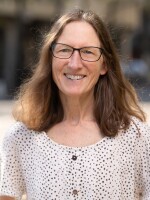Oregon has many historic and geological sites with informative signage. What’s been missing until recently is much recognition of the time before Lewis and Clark. There’s momentum now to tell a deeper history of the state.
Tryon Creek State Park in Lake Oswego bustles with activity. Summer counselors are in training and dozens of hikers walk the trails. Education Director Gabe Sheoships says one key area is closed, though, for renovation:
Sheoships: “Our nature center will reflect the authentic cultural narrative of the land, of the various tribes that used and still use this area.”

Sheoships is Cayuse and Walla Walla and a citizen of the Confederated Tribes of Umatilla. He started a cultural ecology program for native students here as a way to bring people back to the land they were removed from. The new nature center will educate all visitors, about 600 thousand a year:
Sheoships: “Interpretive signage holds a lot of power, but historically authentic tribal narratives have been very lacking in this region.”
Sheoships says state and local governments have been great to work with, but the colonial history sometimes persists:
Sheoships: “When I first started I was looking at a timeline and I was like, ‘Oh this almost makes it appear this land appeared in 1849 when Socrates Tryon led an effort to clearcut old growth trees here so they could produce iron ore.’”

Amanda Craig is a graduate student in landscape architecture at the University of Oregon. Like Sheoships, she’s working to design a park and signage for “The Hollering Place,” a narrows in the Coos River across which native people would shout news or negotiate trades.
Craig: “Whether that be designing restoration or designing landscapes that are sustainable or representative of tribal communities and ideology. I think there’s a big gap in that market.”
David Harrelson is the Cultural Resources director of the Confederated Tribes of Grand Ronde. He says state and local governments have been eager to help fund native-focused public projects lately:
Harrelson: “It’s almost to the point where there’s almost too much work to be done [laughs].”
“Landcestor” is the name for the people that used to live where you live, says Harrelson. While the Kalapuya are his ancestors, they’re landcestors to residents of the Willamette Valley.

Harrelson: “The city of Molalla just erected two statues that talk about the story of Coyote and Grizzly. I’m excited to be able see the stories of our ancestors come to life for the people that live in our homeland.”
In his office the University of Oregon, Tribal Liaison Jason Younker points to his computer’s screen saver, a photo of his homeland near Coos Bay:
Younker: “You would always tell a story at the location where it was created, because it reminds you of all the different aspects on the landscape. That’s why I keep this picture in front of me. It helps me remember.”
Younker says when Native Americans were removed from their land, it didn’t take long for history to lose its meaning:
Younker: “If you can watch a movie without the picture on, that’s what the story would be like.”
History, health, philosophy: To indigenous people, says Gabe Sheoships, these areas interweave, and it’s how he likes to teach:
Sheoships: “Really in a broad scale that everything is very much circular everything very much comes back around. We’re dealing in a dynamic, moving ecosystem where there’s really no end.”

Amanda Craig acknowledges the difficulty of creating a dynamic picture of the Hollering Place using just text:
Craig: “I think mostly it’s us trying to convey the story in the most complete way we can on a sign versus somebody telling you. It’s a hard thing to do, I think.”
Craig wants to integrate art as well as native plants and landforms to make a more holistic experience. Sheoships hopes to expand his native teaching methods beyond Tryon Creek:
Sheoships: “I’d like to continue exploring ways to manage these areas traditionally. I’d also like to look at what building a place-based cultural education piece would like in different areas, perhaps different state parks.”
In the current climate, he’s likely to find traction and monetary help, says David Harrelson:
Harrelson: ”I’m really excited about all the interest for our ancestors and people but I want to make sure its not just a trend or a fad.”

Whether it is or not, Jason Younker has another Indigenous idea to consider. He gestures to a long-term plan on his white board:
Younker: “We need to think more like American Indians and say okay where do we want to be in 100 years? What can we do next, and we just keep chipping away at it. That’s the thing that I’m optimistic about.”
You can see the statues in Molalla today. Tryon Creek’s Nature Center is scheduled to open in mid-July. The Hollering Place won’t be ready for visitors for quite some time.
Extended Interview with Jason Younker






